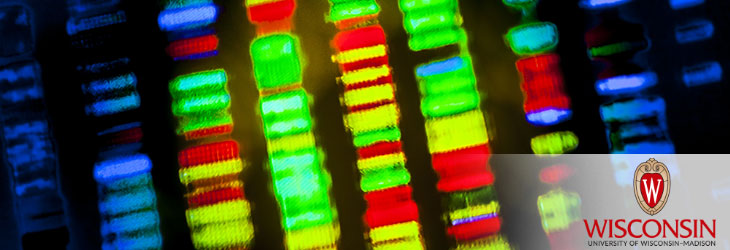Diagnostics & Biomarkers

hMREII Antiserum for the Detection of DNA Damage
WARF: P95198US
Inventors: John H. J. Petrini
The Wisconsin Alumni Research Foundation (WARF) is seeking commercial partners interested in developing antiserum that detects the hMre11 protein, which has been shown to associate with radiation-induced double stranded DNA breaks.
Overview
DNA damage occurs in organisms as a result of exposure to environmental chemicals and radiation. Failure to repair this damage can lead to tumor formation and cancer. Although a gene has been found in yeast that blocks meiotic recombination and confers profound sensitivity to double-strand break DNA damage, a human equivalent has not been found.
The Invention
A UW-Madison researcher has now isolated such a homolog by using a two-hybrid system to determine which proteins interact with the repair enzyme, DNA ligase I. The gene, termed hMREII, maps to human chromosome 11q21 in a region frequently associated with cancer-related chromosomal abnormalities.
The researcher cloned a 1900 base pair portion of the hMREII gene into a bacterial expression vector and used the bacterially produced and purified hMREII to immunize rabbits. The resulting antiserum detects the hMre11 protein, which has been shown to associate with radiation-induced double stranded DNA breaks, as well as human telomeres. Congenitally acquired defects in hMre11 and its binding partner, Nbs1, result in cancer predisposition and ionizing radiation sensitivity; in these diseases, the localization of hMre11 to DNA breaks is compromised. Thus, the antiserum is useful for detecting DNA damage and assessing the functional status of hMre11 and its associated proteins. The Mre11 complex, consisting of these proteins, is a central mediator of DNA damage responses in all eukaryotic cells.
The researcher cloned a 1900 base pair portion of the hMREII gene into a bacterial expression vector and used the bacterially produced and purified hMREII to immunize rabbits. The resulting antiserum detects the hMre11 protein, which has been shown to associate with radiation-induced double stranded DNA breaks, as well as human telomeres. Congenitally acquired defects in hMre11 and its binding partner, Nbs1, result in cancer predisposition and ionizing radiation sensitivity; in these diseases, the localization of hMre11 to DNA breaks is compromised. Thus, the antiserum is useful for detecting DNA damage and assessing the functional status of hMre11 and its associated proteins. The Mre11 complex, consisting of these proteins, is a central mediator of DNA damage responses in all eukaryotic cells.
Applications
- Detecting DNA damage
Key Benefits
- May be useful in clinical diagnosis as a predictive tool